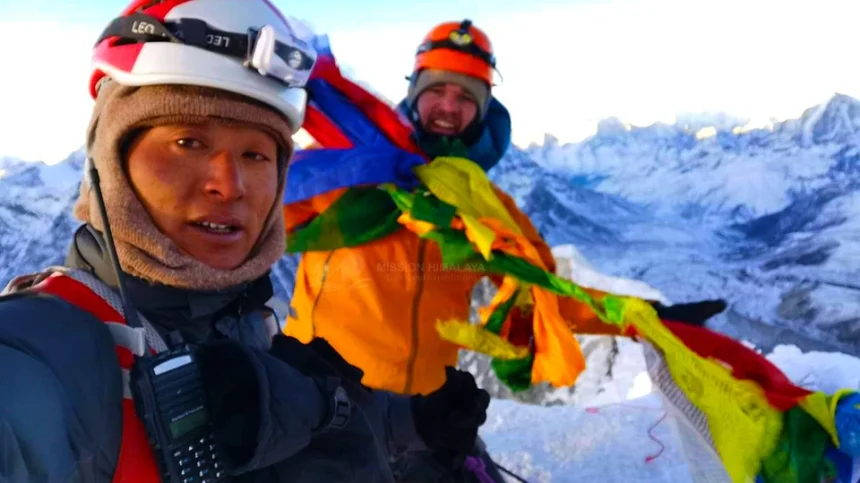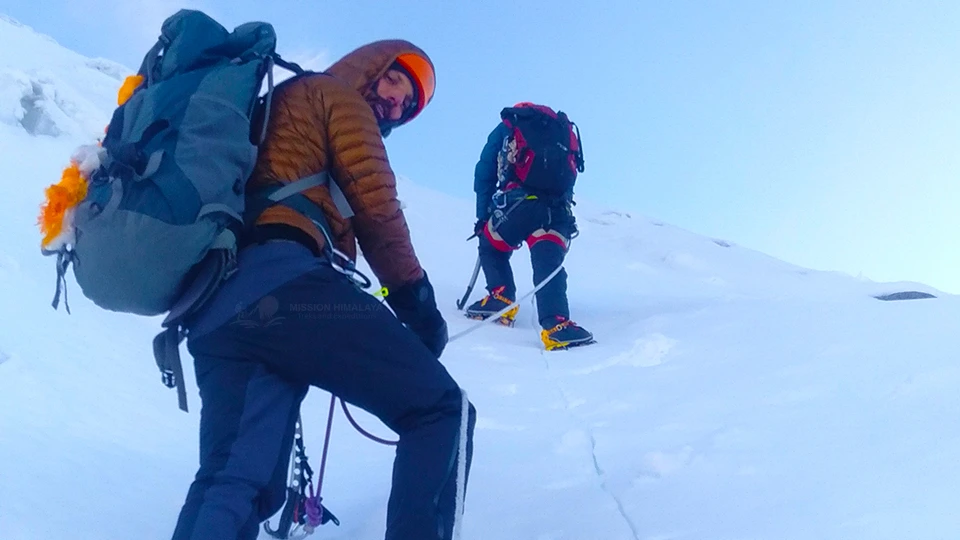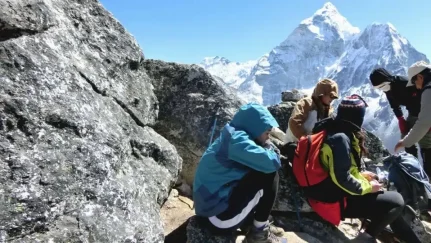Island Peak and its incredibly embroidered ambiance and trekking route invite many adventurers to obtain Island Peak Climb permits every year.
Even your landing on this blog titled ”How to obtain Island Peak Climb Permit?” indicates that you are thinking of or eager to reach the peak of Island Peak. But Island Peak is not one of those peaks you can just summit on a whim.
Conquering Island Peak demands great physical fitness, knowledge of altitude sickness, safety walking in snow-covered trails, and last but not least, an Island Peak Climb permit.
A grueling journey to Island Peak climbs up to 6189m, placing you on the summit with stunning vistas of the Everest Region while invigorating a deep sense of personal accomplishment. You will get such an experience only after pushing yourself through the limits.
How to obtain an Island Peak Climb Permit?
You cannot get a climbing permit for the Nepal mountains on your own. The coveted Island Peak Climb permits are not that hard to acquire. Collaborating with the government-registered trekking agencies in Nepal, you just have to work on some document procedures and submit the required cost. For the details regarding permits, cost, and document requirements go with the blog till the end.
Number of Permits for Island Peak Climbing
A total of three permits are required for Island Peak Climb. They are:
- Nepal Mountaineering Association Permit
- Sagarmatha National Park entry Permit
- Khumbu Pasang Lhamu Rural Municipality Entry Permit
Hhttps://whc.unesco.org/en/list/120/ow much should I set aside for the Island Peak Climb Permit?
Nepal Mountaineering Association Permit Fee
A peak climbing fee is set by the Nepal Mountaineering Association. Peak climbing fees are normally used to conserve areas around the region Depending on the different seasons the cost of the climbing permit varies and so is in the case of the Island Peak climb permit.
The cost of the NMA-issued permit per person on different seasons is mentioned below:
- Spring(March-May): USD 250 per person
- Autumn (September-November): USD 125 per person
- Summer(June-August): USD 70 per person
- Winter(December to February): USD 70 per person
Being the off-season, the season of summer and winter welcomes very few trekkers to the region resulting in the low permit cost per person. However, during the peak season of Spring and Autumn, the cost doesn’t remain the same. During these peak seasons, everything from views to the climates caters their best to drag many trekkers for this climb. Thus, you will find the hype in the permit cost in both of these seasons. Furthermore, as the most preferable time for Island Peak Climbing is Spring, the permit cost per person reaches to highest during Spring. After Spring, Autumn is the best time for Island Peak Climb.
- Island Peak climbing techniques
Sagarmatha National Park Entry Peermit Fee
As the Island Peak Climbers enter the Sagarmatha National Park area, they require this national park permit. For visitors from SAARC nations, the fee is designated to around USD 15. For other International travelers, the entry fee is approximately USD 30.
Garbage Deposit Fee
The garbage Deposit Fee for Island Peak is USD 500. You have to pay this fee to the Nepal Mountaineering Association. This fee is refundable once you return from the trip. The amount is imposed on the trekkers initially so that they bring back the garbage while ensuring the proper disposal of it.
Khumbu Pasang Lhamu Rural Municipality Entry Permit Fee(Local Area Permit):
To traverse through the various municipalities of the Everest region, this separate Local Area Permit is mandatory for every visitor visiting the region. During the Island, Peak Climb the local area permit namely Khumbu Pasang Lhamu Rural Municipality Entry Permit is required to roam around the region. This local area permit cost is set at around USD 20. The permit cannot be acquired from the Kathmandu Valley but is obtainable once you reach Lukla.
Mandatory Documents for Island Peak Climb Permit
Obtaining a permit to climb Island Peak requires the following documents:
- Two Passport sized photos
- Photocopy of your passport
- A properly filled-out application form
- Nepali currency to pay for the permit
- Travel insurance that includes helicopter evacuation as well
By contacting the government-registered trekking agency in Nepal collect all the permits. Don’t make the silly planning of collecting an NMA permit on your own as it is quite impossible. To obtain an NMA permit you must have to be engaged with a government-registered trekking company in Nepal.
Recommended Island Peak Climbing Itineraries
Though we can organize another itinerary plan for Island Peak Climb, have a look at our best recommended Island Peak Climbing Itineraries.
14 Days Island Peak Climbing Itinerary
The 14-day Island Peak Climb is best suited for experienced mountaineers. Passing through Namche, Tengboche, and Dingboche, this package takes the climbers from Lukla to Chukhung and then to Island Peak while following the same route to get down.
Island Peak Climbing with EBC
It is the best alternative for every single trekking enthusiast out in the world there. Prior trekking experience to EBC promises the wonderful feeling of being close to the World’s highest mountain while leaving one with the best acclimatization for the further Island Peak Climb. Isn’t it great to have both the trekking and climbing experience within a single go? Of Course, yes. Also, make sure to check our tips for Island peak climbing.
Is a trekking guide mandatory for Island Peak Climbing?
To climb Island Peak you must have a government-licensed guide with you.
Conclusion
For enthusiastic mountaineering lovers and novice climbers Island Peak Climb is absolutely preferable. Having all the above mentioned regarding how to obtain Island Peak Climb Permit? you are all set up for the rewarding journey. For further book and other queries feel free to contact Mission Himalaya Treks and Expeditions, a trusted and government-registered trekking company in Nepal.












